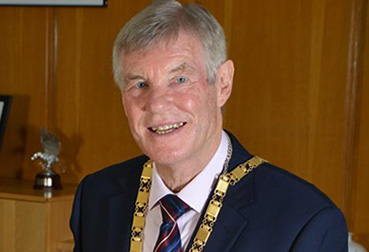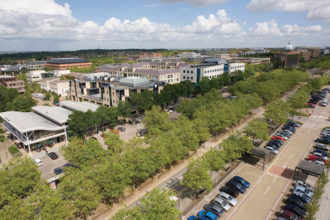Milton Keynes Mayor Cllr Sam Crooks explains why the borough retains only a third of the rates that businesses pay. That figure may change next year but may still not keep pace with Milton Keynes’ rate of growth.

TRADITIONALLY February has always been the month of love. Except at the council.
For on the 26th of this month we have to agree our revenue and capital budgets for the financial year beginning April 1. The council tax proposed for a Band D tax payer is £1,429.86 a year, up by 3.49% from the current year including a government-permitted increase of 1.5% for adult social care.
The council’s total revenue budget (excluding capital expenditure) for 202/21 is proposed as £208.5 million. Within this the anticipated business rate income is likely to amount to a little over £53 million or 25% of the total. But will this continue?
For many years central government has part-financed local authorities through the Revenue Support Grant but in the last five years this has been reduced by 80% alongside indications that – to compensate – the proportion of business rate retention permitted to councils might be increased from 50% to 75%.
However, no final decisions have yet been taken pending a spending review later this year, although the period it will cover has not been confirmed.
Meanwhile in 2020-21 we estimate that we will collect circa £162 million in business rates, of which £81 million (50%) will be paid automatically to the government. The other 50%c we retain.
But we are also required to pay a tariff – just under £29 million for Milton Keynes – which goes to fund other local authorities whose needs are greater than the 50% of business rates that they, like us, are allowed to retain. We also pay a levy of £3 million which funds a national safety net providing councils with protection against unforeseen reductions in their business rate income.
Conversely, we receive grants for activities such as the promotion of renewable energy and improving the social mobility outcomes of children and young people. Currently these total £6 million.
The net effect of these adjustments is that we expect to retain for use in Milton Keynes a little over £53 million of the £162 million originally collected. Averaged over a longer period, we retain a net 30p of every £1 that we collect.
Contrary to what many people think, business rates are not determined by the council. They are decided by central government. It sets the multiplier, a pence in the pound value which is then applied to the rateable value, an estimate of the open market rental value a property would achieve on a specified date.
Properties with a rateable value of £12,000 or less are exempt from business rates and those up to £15,000 are eligible for small business rates relief. There are other reliefs and exemptions, including a 80pc discount for properties used by charities.
The Valuation Office Agency, which calculates and updates these property valuations, is a national body independent of the council. The most recent revaluation came into force in April 2017, based on property values in April 2015.
However, we have problems. There are delays entering our new business properties on to the Valuation List. Sometimes the Valuation Office is up to six months behind, which impacts on the timing of receipts, and the outcome of national and local appeals against Valuation Office decisions makes it difficult to forecast likely income accurately.
The business rates system is due to be reset in 2021-22. But this is likely to be based on historical information and not to reflect fully the dynamic nature of Milton Keynes’ growth.
But there is good news…
- We are still one of the country’s fastest growing economies, both in terms of employment and output -fourth only behind Reading, Cambridge and Oxford.
- Of the UK’s 63 largest towns and cities we have the fifth highest start-up rate per 10,000 population.
- We estimate that there are around 180,000 jobs in Milton Keynes, a job density of 1.15 which equates to more jobs than working age population.
- Despite limited resources, the council is investing £3.5 million in our future growth plans, £2.4 million in tackling climate change and £1.25 million in the city centre.
Maybe February is not so bad a month after all.
Thank you to everyone who commented on my article last month about the growth of Milton Keynes. The council has now launched a public consultation on its plans, open until April 3. Here’s the link: http://www.mkfutures2050.com/


